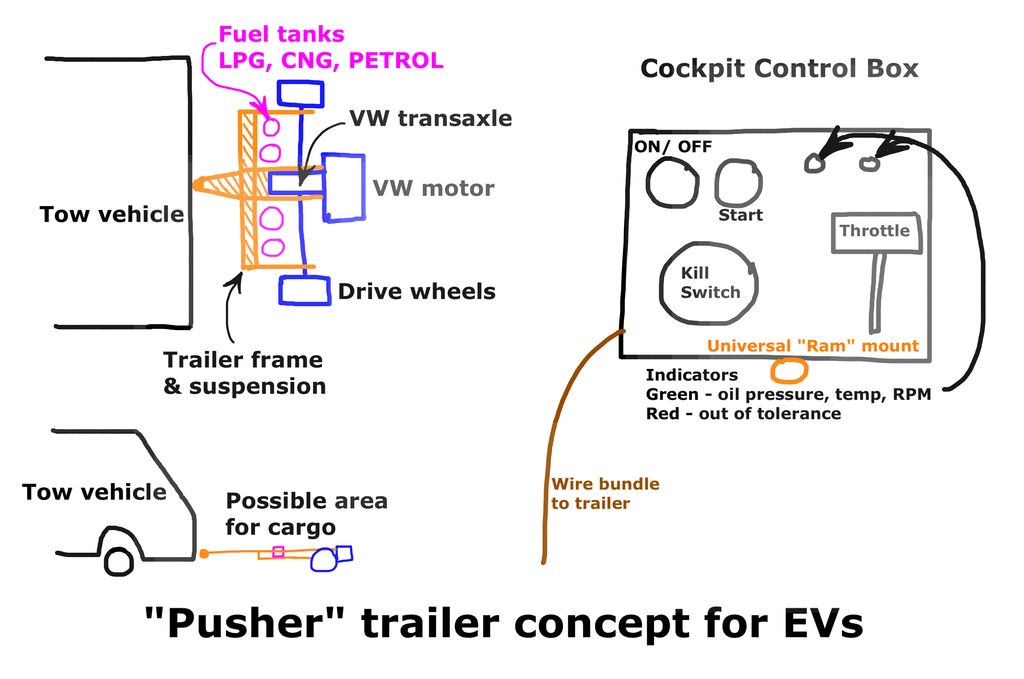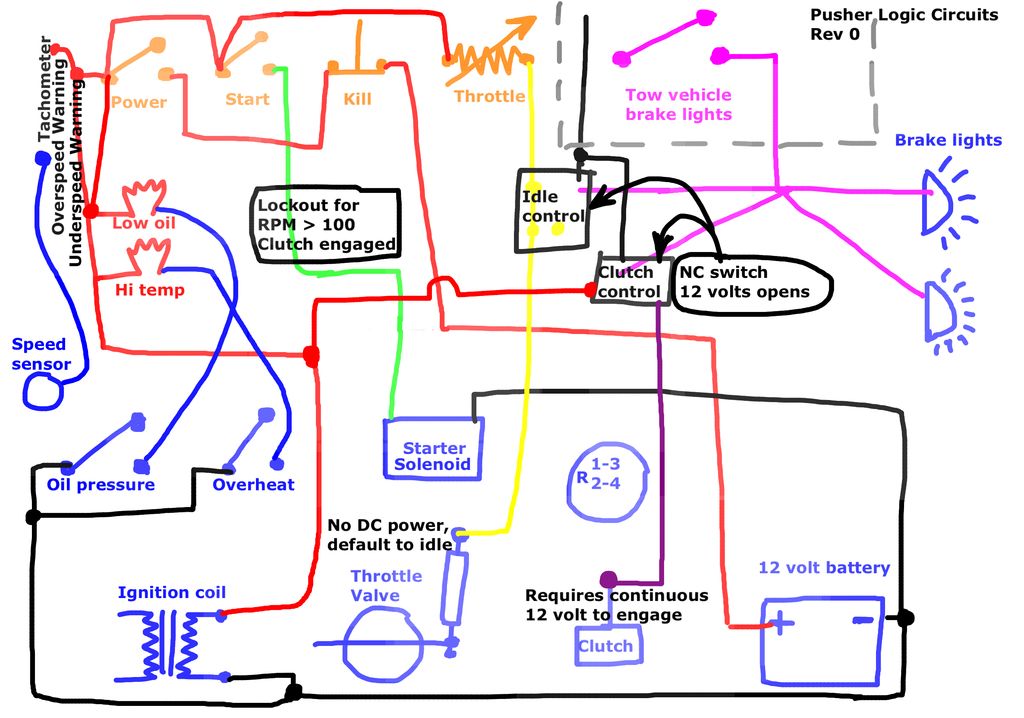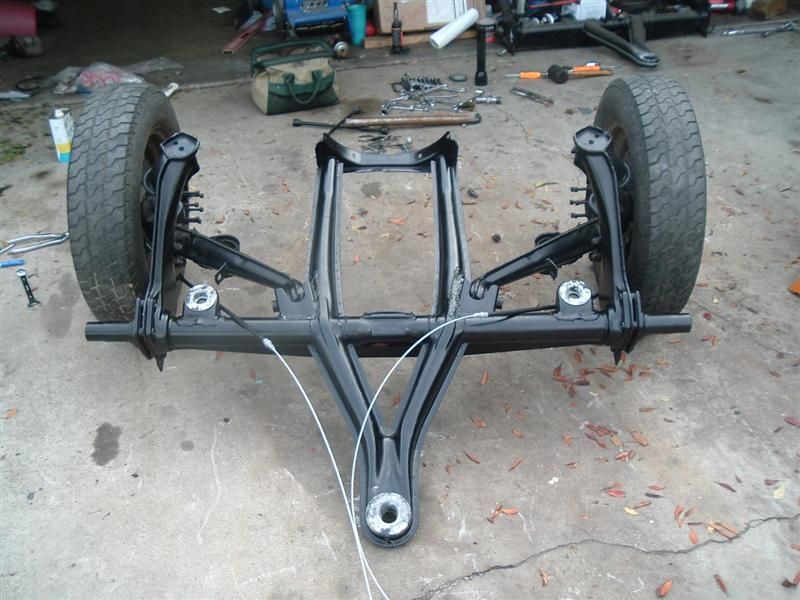TonyWilliams
Well-known member
This thread is to discuss an internal combustion reciprocating engine that is trailer mounted, designed to push an EV. This thread is NOT to discuss the merits of such a venture (which I personally find nebulous). It is a design exercise.
For the discussion, we will assume this apparatus is street legal and CARB - EPA compliant. It can have 1, 2, or more wheels.
PRIMARY PURPOSE: the device could completely charge an EV with regen while being towed, as well as propel the car as far as the fossil fuels keep getting replenished.
A) A traditional VW "Bug" transaxle and motor (yes, it could be ANY drive engine, but this focuses attention to design and not motor selection). Further, assume this motor has adequate power to propel the tow vehicle up hills (let's say 40hp) and it is NOT a diesel (LPG, CNG, or gasoline).
B) The ONLY physical connection to the vehicle is the 2" receiver hitch and the 4 wire trailer lights.
C) There is absolutely no modification to the tow vehicle beyond a traditional trailer hitch and proper wiring for trailer lighting (license plate light, brake, running lights, left and right turn signal)
D) A cable with a Cockpit Control Box (CCB) must be provided for access while he/she is operating the tow vehicle. It will contain a power button, start button, kill switch, basic motor indicators, and a throttle control.
****************************
1) Flip a switch on the CCB to power up the pusher electrics. Electrical power comes from the 12 volt battery on the trailer, which is also used to power the Bug motor's starter.
2) Press the start button, which is not enabled until the pusher electrics is on.
3) The motor won't start unless the clutch is disengaged. Anytime the clutch disengages, the transaxle goes to 4th gear. This requires two servos or linear actuators. The power switch disengages the clutch and puts the transaxle in 4th gear, and enables the start button (N/O relay closes to allow power to the starter solenoid switch).
4) With the motor running, the simple way to engage the clutch is to drive the tow vehicle to the calculated speeed that the fast idle speed of the VW motor will be in 4th gear, then engage clutch. Ideally, this would be an automated process that when the motor flywheel speed and clutch speed would match within X%, which would then engage the clutch.
5) This would enable the pusher throttle control. The vehicle can remain in Drive, or "ECO" / B / L, which will recharge the battery in the EV, or neutral to let the pusher just propel the car.
6) Pusher throttle control - I think a boat or airplane type lever, but the actual connection to the motor throttle needs to be a "fly-by-wire". No clunky cables.
7) Pressing the tow vehicle brake pedal will open a NC switch to stop the Bug motor from propelling the vehicle (separate from the kill switch)
8) To disengage / shutdown - Hit kill button which will disengage clutch and put transaxle in neutral.
9) Turn off the power switch, which will shut down the motor by cutting 12 volt to the ignition coil, and shutting off the Fuel Shut Off Valve (FSOV).
10) Optional trailer brakes.



For the discussion, we will assume this apparatus is street legal and CARB - EPA compliant. It can have 1, 2, or more wheels.
PRIMARY PURPOSE: the device could completely charge an EV with regen while being towed, as well as propel the car as far as the fossil fuels keep getting replenished.
A) A traditional VW "Bug" transaxle and motor (yes, it could be ANY drive engine, but this focuses attention to design and not motor selection). Further, assume this motor has adequate power to propel the tow vehicle up hills (let's say 40hp) and it is NOT a diesel (LPG, CNG, or gasoline).
B) The ONLY physical connection to the vehicle is the 2" receiver hitch and the 4 wire trailer lights.
C) There is absolutely no modification to the tow vehicle beyond a traditional trailer hitch and proper wiring for trailer lighting (license plate light, brake, running lights, left and right turn signal)
D) A cable with a Cockpit Control Box (CCB) must be provided for access while he/she is operating the tow vehicle. It will contain a power button, start button, kill switch, basic motor indicators, and a throttle control.
****************************
1) Flip a switch on the CCB to power up the pusher electrics. Electrical power comes from the 12 volt battery on the trailer, which is also used to power the Bug motor's starter.
2) Press the start button, which is not enabled until the pusher electrics is on.
3) The motor won't start unless the clutch is disengaged. Anytime the clutch disengages, the transaxle goes to 4th gear. This requires two servos or linear actuators. The power switch disengages the clutch and puts the transaxle in 4th gear, and enables the start button (N/O relay closes to allow power to the starter solenoid switch).
4) With the motor running, the simple way to engage the clutch is to drive the tow vehicle to the calculated speeed that the fast idle speed of the VW motor will be in 4th gear, then engage clutch. Ideally, this would be an automated process that when the motor flywheel speed and clutch speed would match within X%, which would then engage the clutch.
5) This would enable the pusher throttle control. The vehicle can remain in Drive, or "ECO" / B / L, which will recharge the battery in the EV, or neutral to let the pusher just propel the car.
6) Pusher throttle control - I think a boat or airplane type lever, but the actual connection to the motor throttle needs to be a "fly-by-wire". No clunky cables.
7) Pressing the tow vehicle brake pedal will open a NC switch to stop the Bug motor from propelling the vehicle (separate from the kill switch)
8) To disengage / shutdown - Hit kill button which will disengage clutch and put transaxle in neutral.
9) Turn off the power switch, which will shut down the motor by cutting 12 volt to the ignition coil, and shutting off the Fuel Shut Off Valve (FSOV).
10) Optional trailer brakes.



